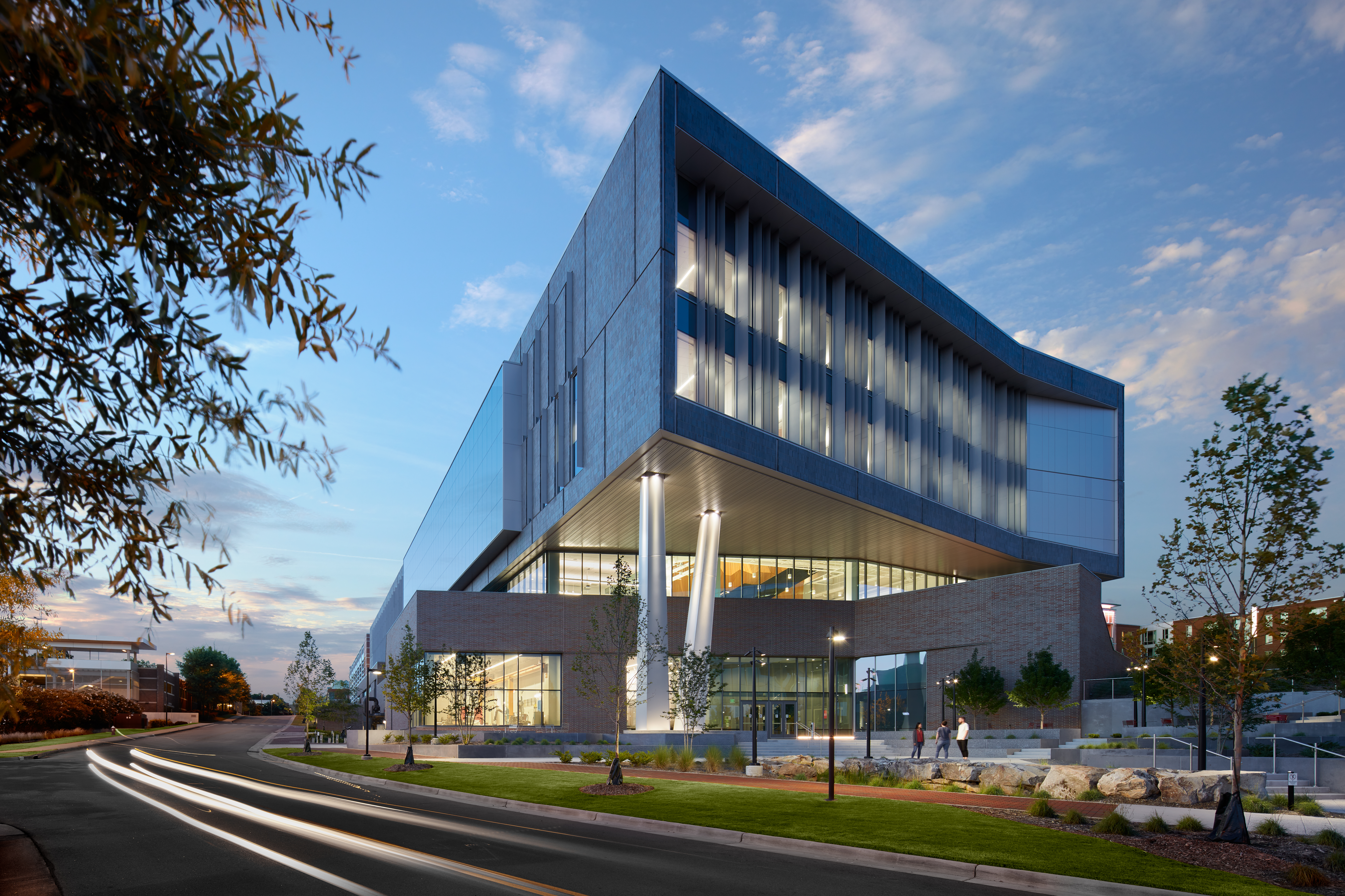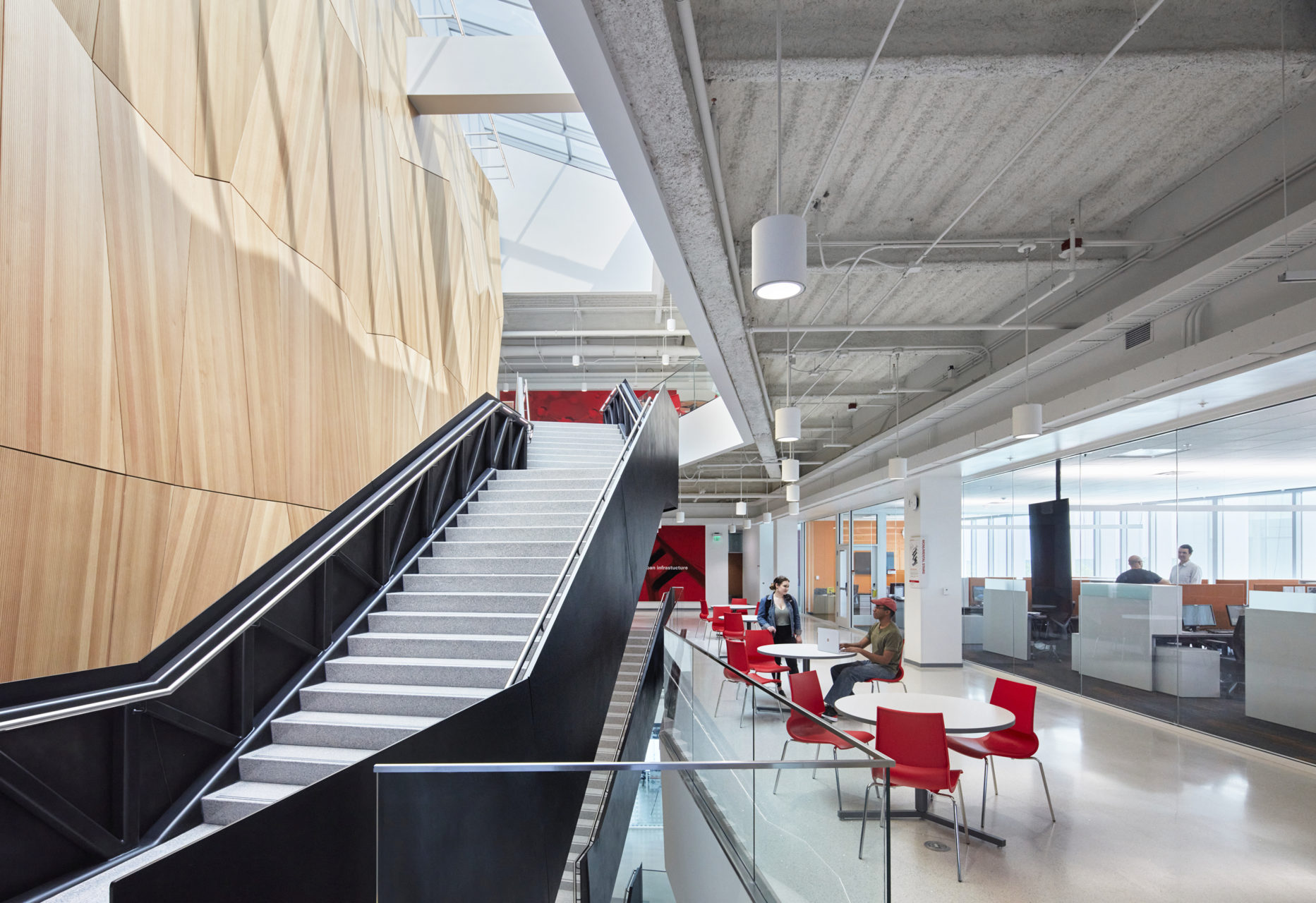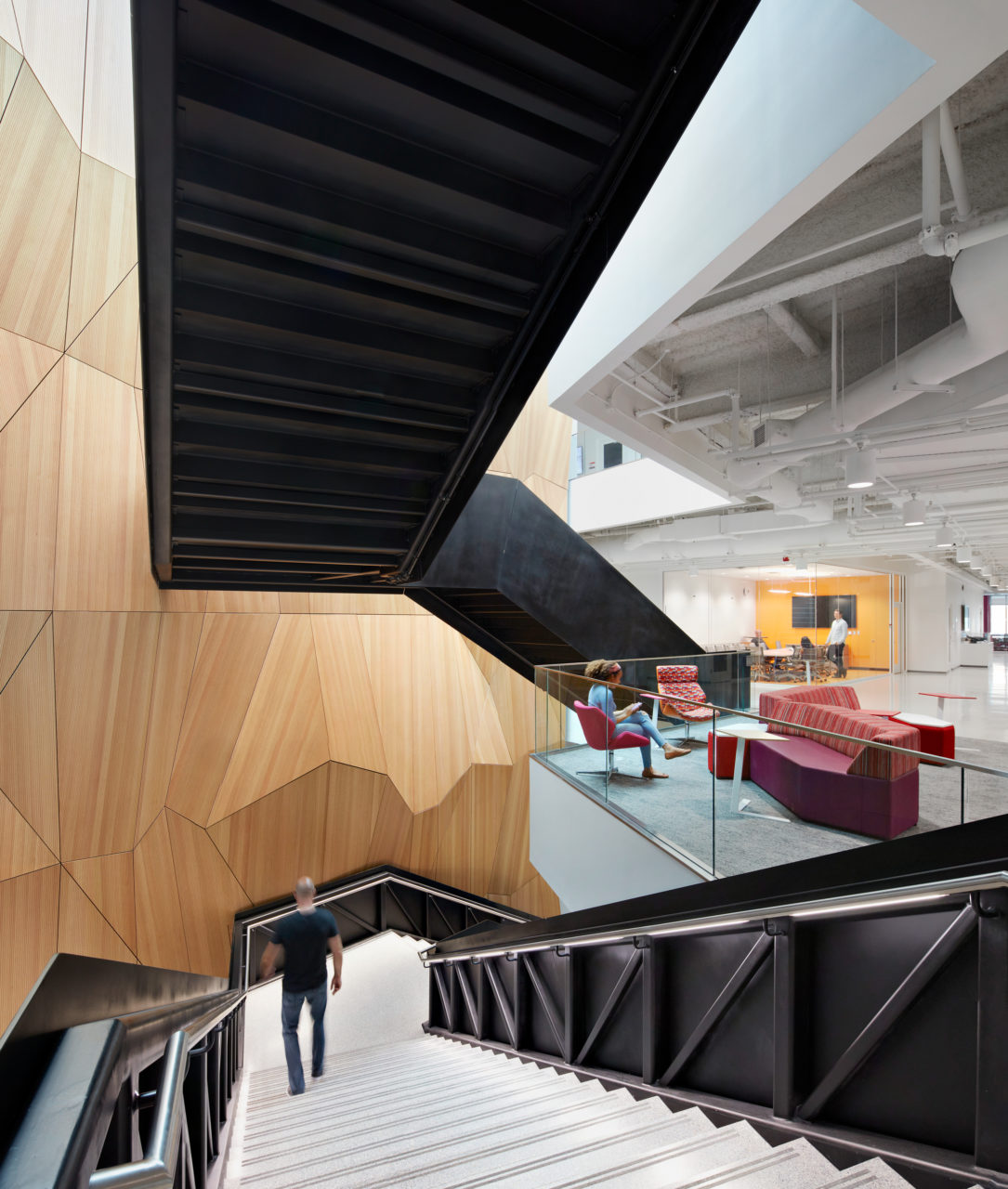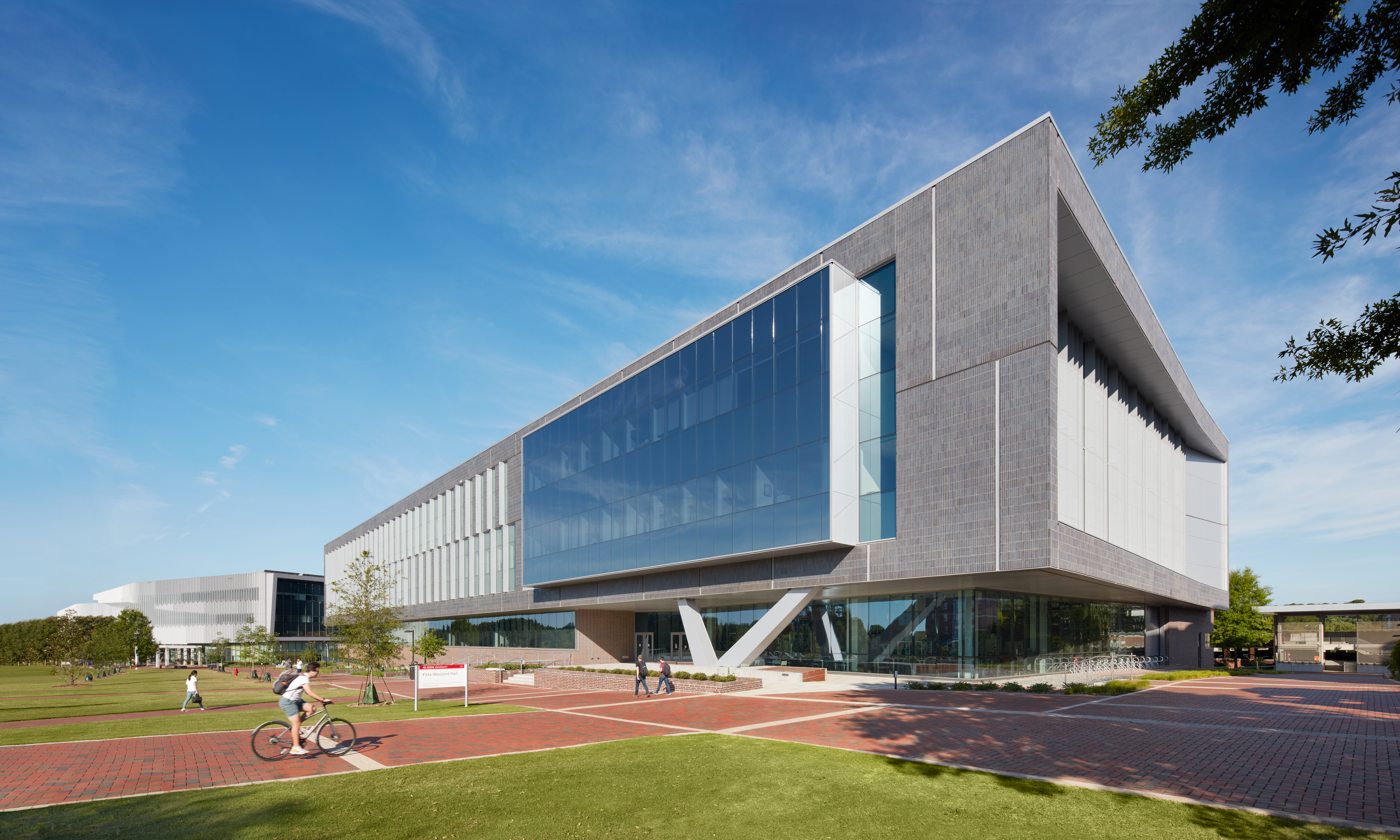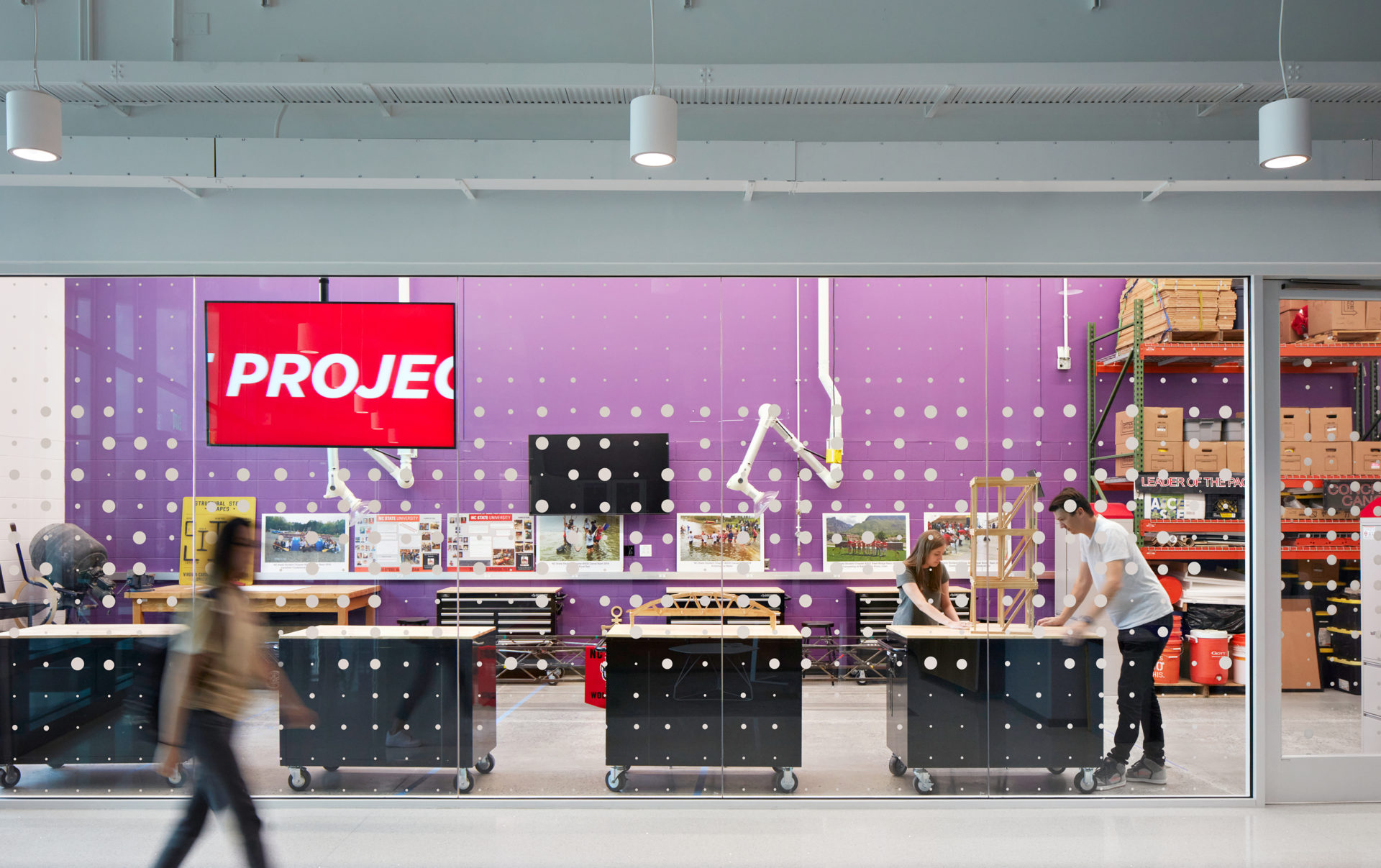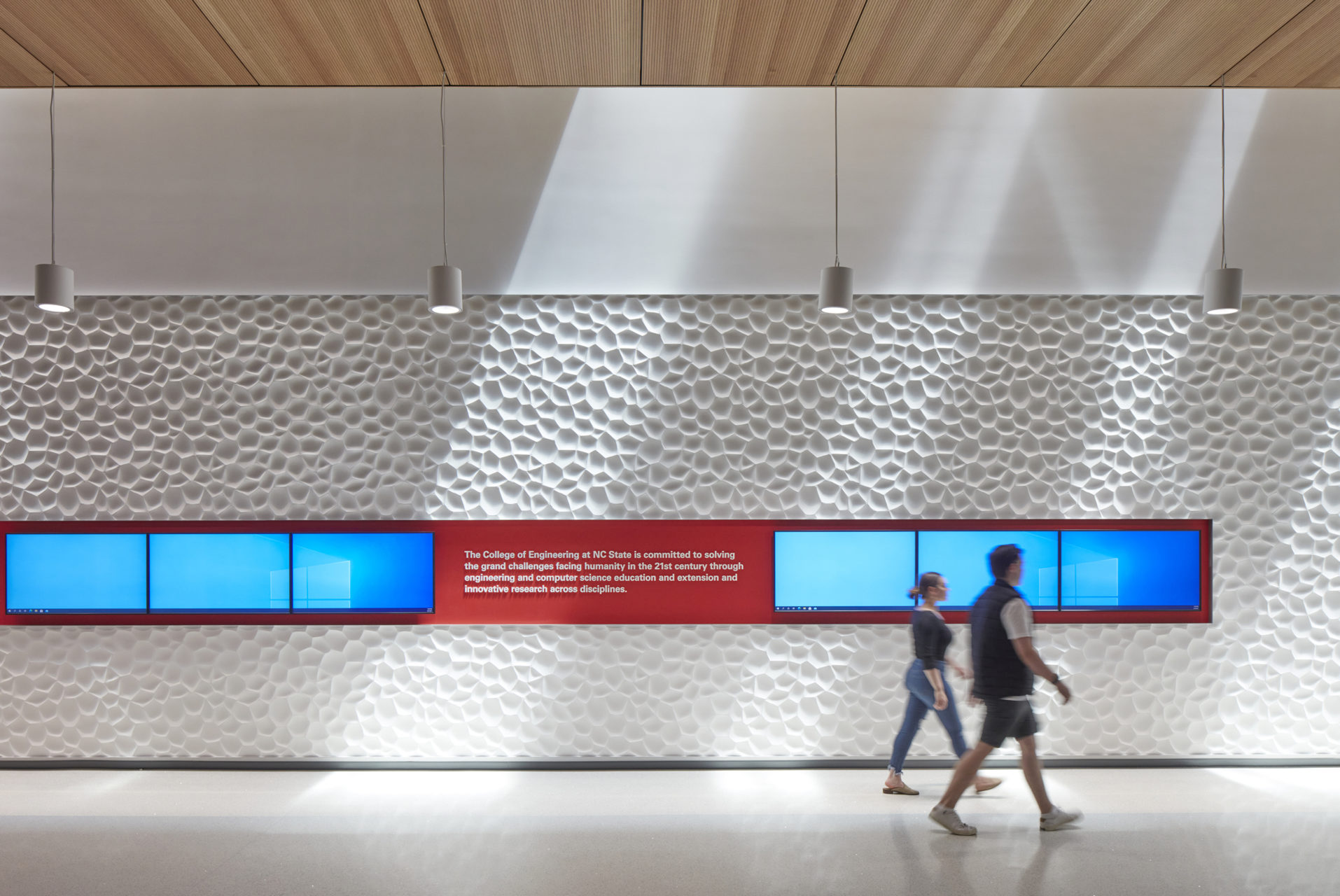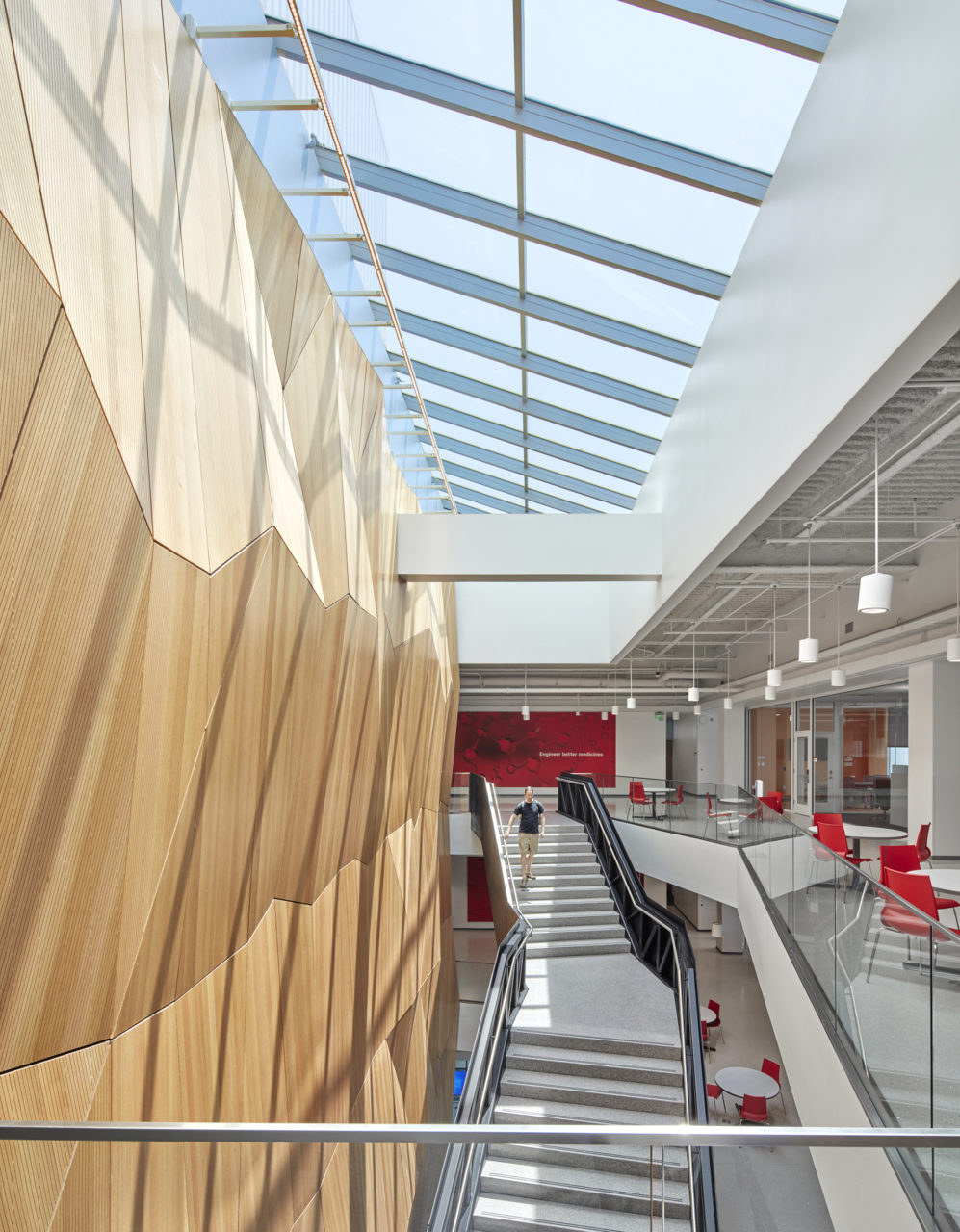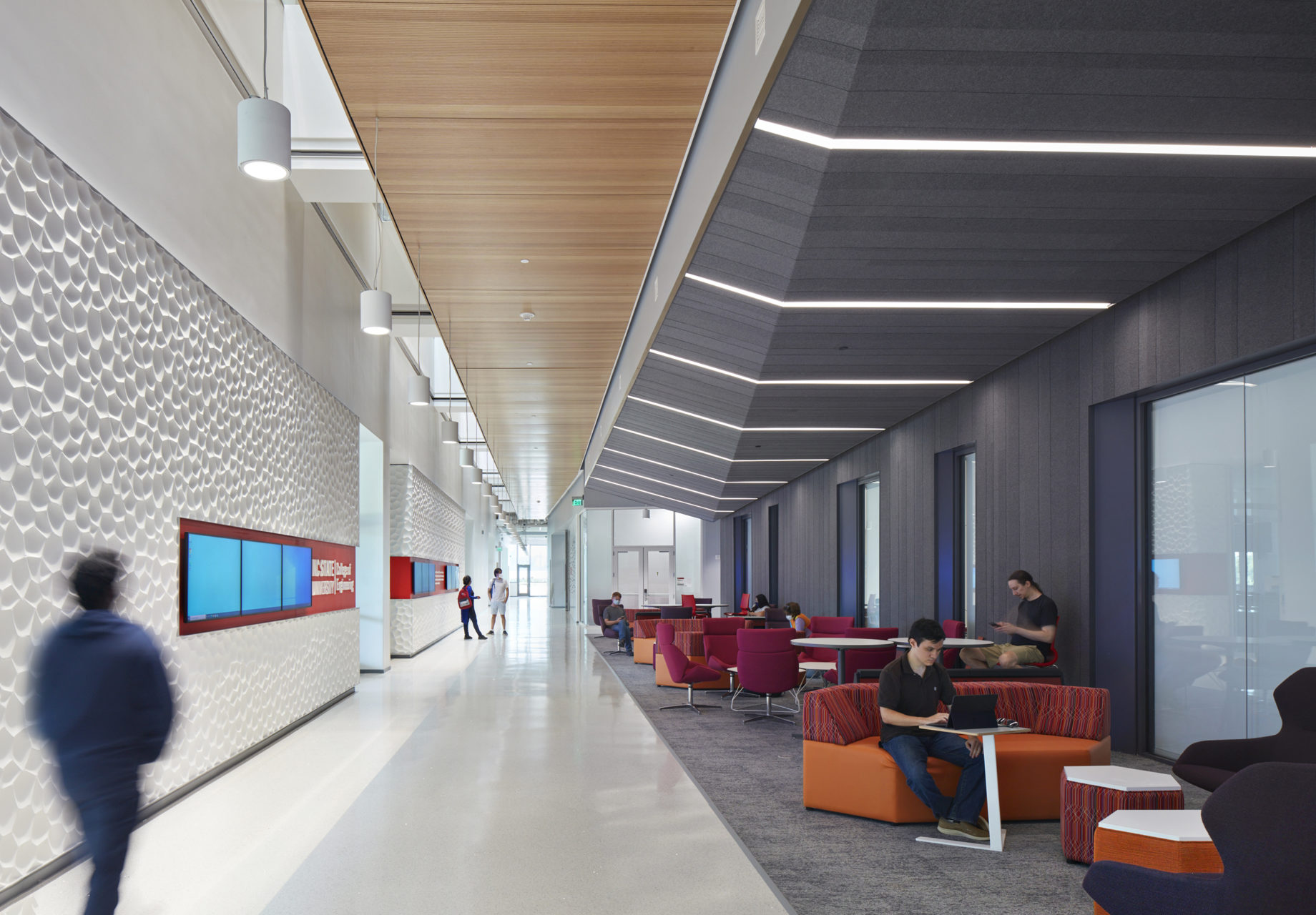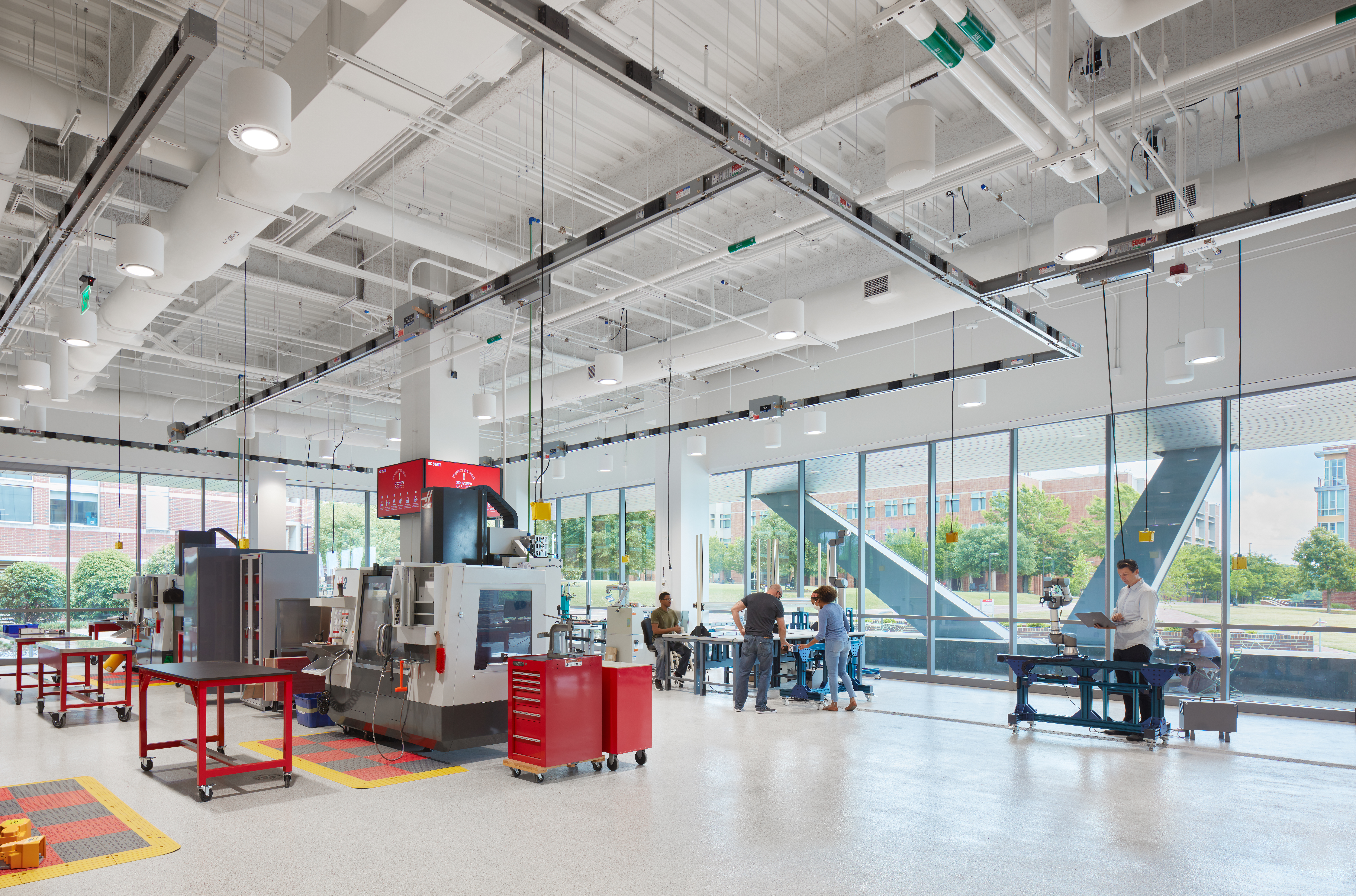The design is driven by a commitment to “engineering on display.” Throughout the four-story facility, high degrees of transparency create a light-filled, vibrant education environment.
As one of the nation’s premier engineering schools, NC State is a powerful driver of economic impact in North Carolina and beyond, with graduates dominating the state’s highly skilled workforce at companies including Cree, SAS, and IBM. In the past 10 years, engineering undergraduate enrollment at NC State has grown by 22 percent, and graduate enrollment has more than doubled. The new Fitts-Woolard Hall provides an innovative facility to help accommodate that growth and further position NC State University as an international leader in engineering education.
Fitts-Woolard Hall marks the culmination of the College of Engineering’s move to the oval on Centennial Campus. The facility joins Engineering Buildings I, II, and III on this unique campus that blends education, research, industry, government, and community spaces. Clark Nexsen partnered with NC State to develop a dynamic, state-of-the-art facility centered on goals to promote interaction and collaboration between students, faculty, and individual engineering departments. Accommodating The Fitts Department of Industrial and Systems Engineering, The Department of Civil, Construction, and Environmental Engineering, and a portion of the College of Engineering Dean Administration, the new Fitts-Woolard Hall has proximity to eight additional University engineering departments. The opportunity for convergence across disciplines will foster an environment of innovation.
Fitts-Woolard Hall reflects NC State’s mission to promote an integrated approach to problem solving and their commitment to excellence in education. As demand for engineering and computer science degrees continues to rise, Fitts-Woolard Hall plays a key role in recruiting the best and brightest engineering students and producing tomorrow’s industry leaders.
The design is driven by a commitment to “engineering on display.” Throughout the four-story facility, high degrees of transparency create a light-filled, vibrant education environment.
The main entry is flanked on one side by a large structural testing lab, which is visible to pedestrians and drivers on the exterior of the building and to students and visitors on the interior. This hands-on, investigative space enables civil and structural engineers to test theories, calculations, and materials.
Engineering on display is evident beyond educational spaces, as well. Throughout the facility, structural and mechanical building systems are revealed as an additional instructional tool. This commitment to transparency in all aspects of design emphasizes the cutting-edge research and education occurring within.
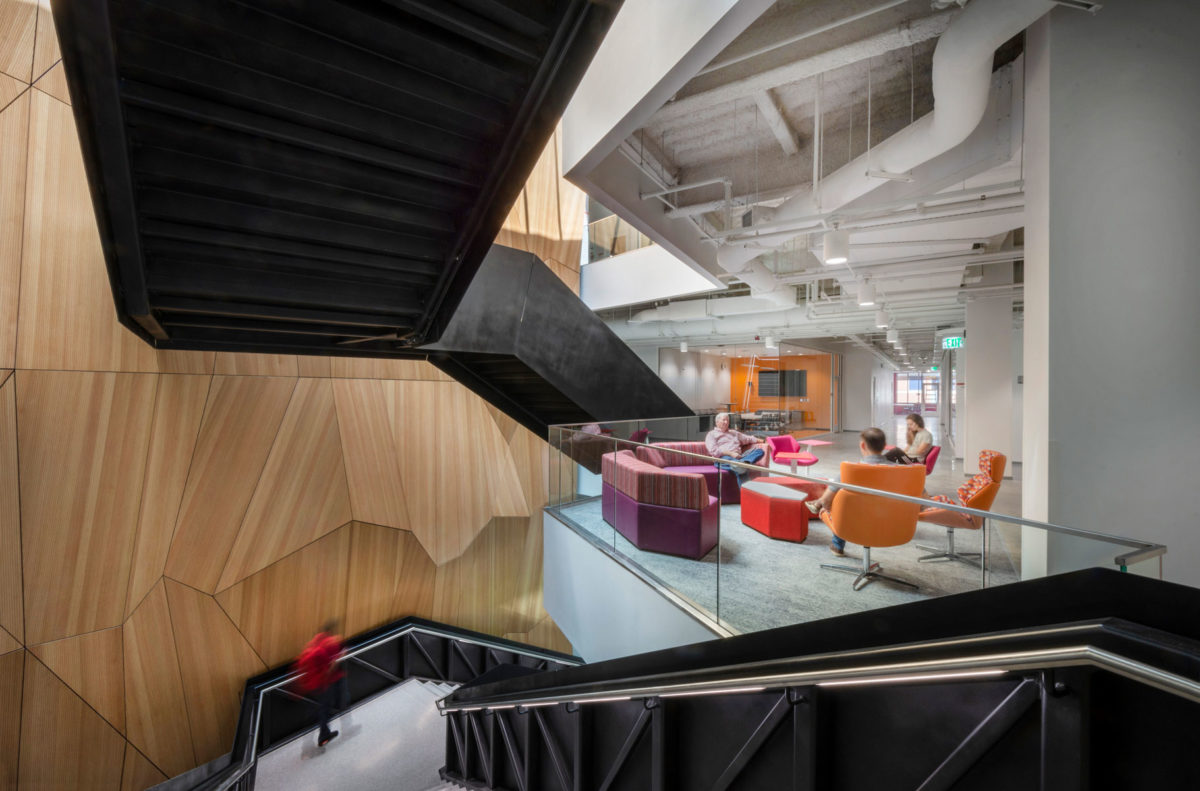 The steel-plated monumental stair acts as a connecting thread between all four floors. Its path weaves upward alongside a feature wall designed to reflect the diverse engineering studies housed in the building. Its form creates a variety of gathering and collaboration spaces.
The steel-plated monumental stair acts as a connecting thread between all four floors. Its path weaves upward alongside a feature wall designed to reflect the diverse engineering studies housed in the building. Its form creates a variety of gathering and collaboration spaces.
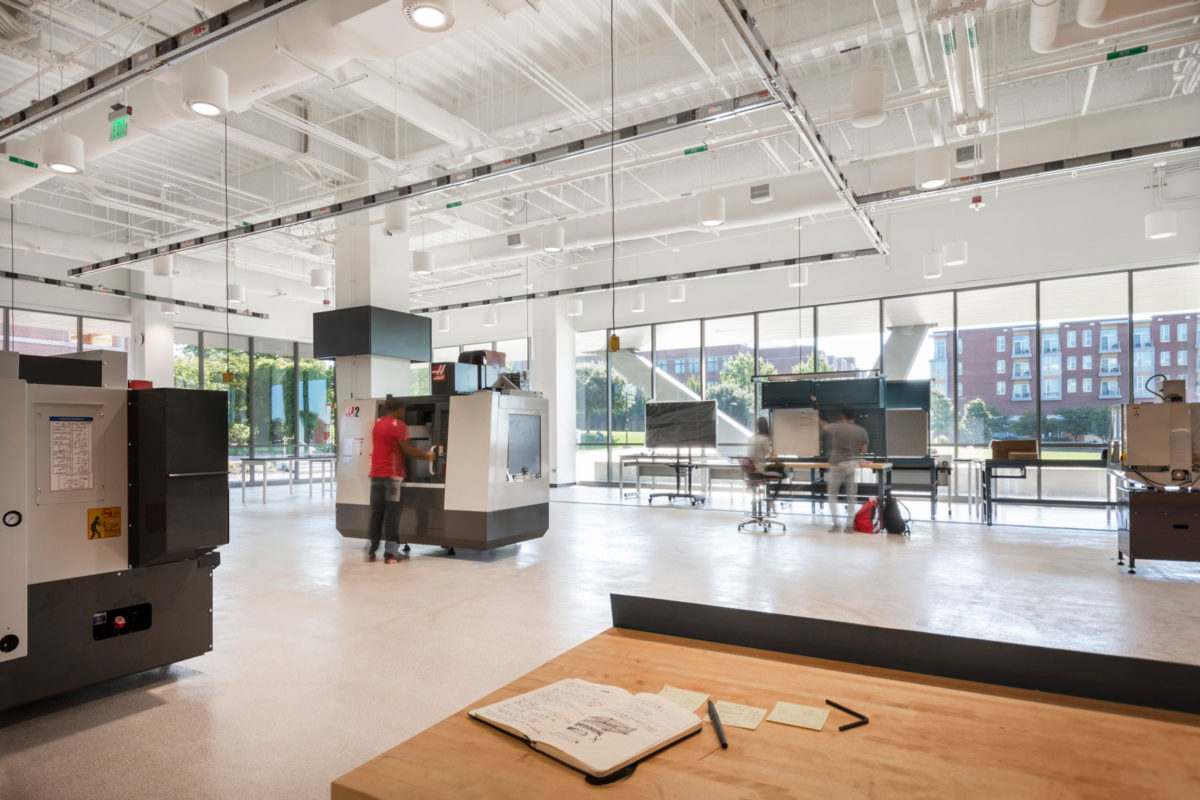 Each teaching and research space supports initiatives critical to the global high-tech economy, including advanced manufacturing, bioengineering, ergonomics, robotics and sensor technology, transportation and logistics, and environmental. From a large scale driving simulator to testing labs for military equipment, students have access to spaces where they can apply classroom knowledge and explore the results.
Each teaching and research space supports initiatives critical to the global high-tech economy, including advanced manufacturing, bioengineering, ergonomics, robotics and sensor technology, transportation and logistics, and environmental. From a large scale driving simulator to testing labs for military equipment, students have access to spaces where they can apply classroom knowledge and explore the results.
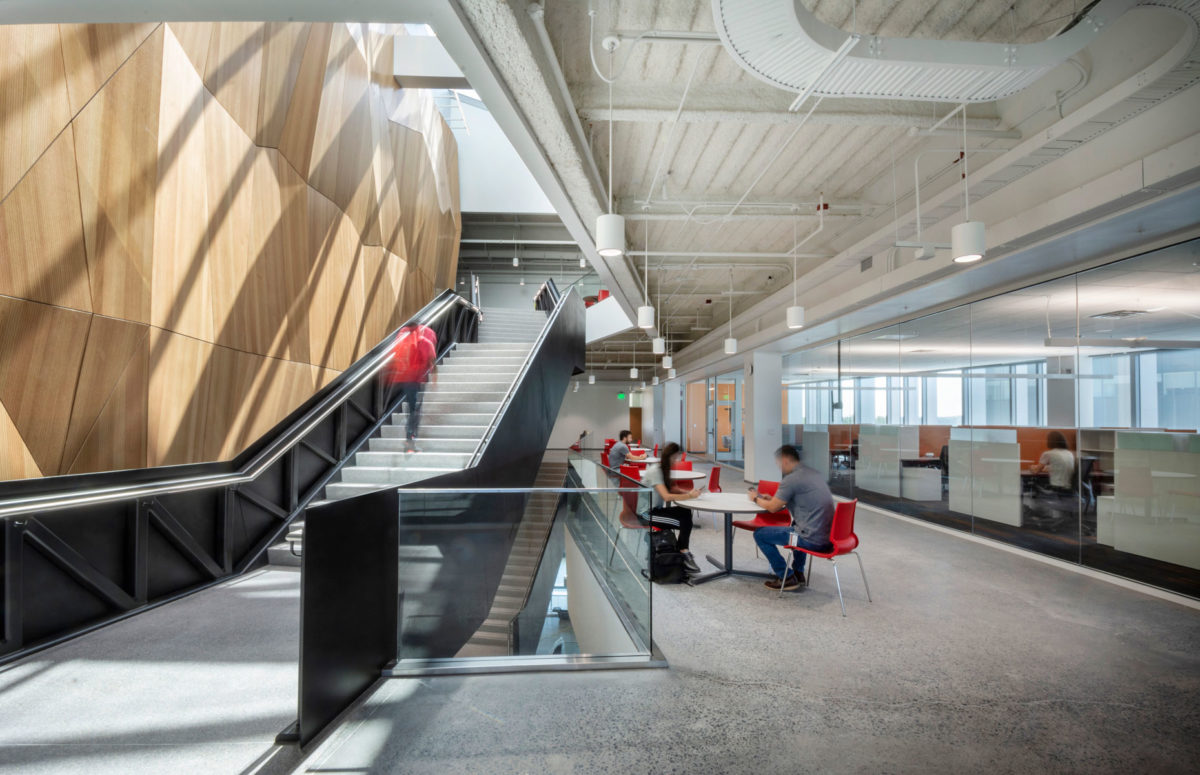 Goals for daylighting and transparency remain evident in the design of the third and fourth floors, which are contained in a striking floating volume supported by expressive gestural columns reminiscent of the structural and civil disciplines. Shown above, an open office concept for graduate students and the use of glass allows daylight to penetrate into the building.
Goals for daylighting and transparency remain evident in the design of the third and fourth floors, which are contained in a striking floating volume supported by expressive gestural columns reminiscent of the structural and civil disciplines. Shown above, an open office concept for graduate students and the use of glass allows daylight to penetrate into the building.
Faculty offices line the exterior of these floors, which also contain additional classrooms and research labs. Consistent with the first and second floors, the design focuses on inspiring collaboration and innovation through glimpses into high-tech lab environments.
Fitts-Woolard Hall is reflective of NC State’s mission to promote an integrated approach to problem solving and their commitment to excellence in education. As demand for engineering and computer science degrees continues to rise, Fitts-Woolard Hall will play a key role in recruiting the best and brightest engineering students and producing tomorrow’s industry leaders.
Awards
AIA North Carolina Merit Award, 2024
AIA Triangle Merit Award, 2022
Sir Walter Raleigh Award for Landscape Architecture (Surface 678), 2022
Building North Carolina Award for Best Public Project, 2021
AIA South Atlantic Region Merit Award, Interior Architecture, 2021
Structural Engineers Association of North Carolina Excellence in Structural Engineering Award, 2021
